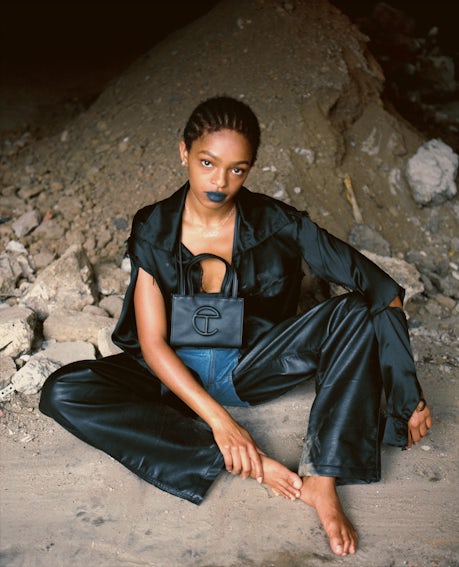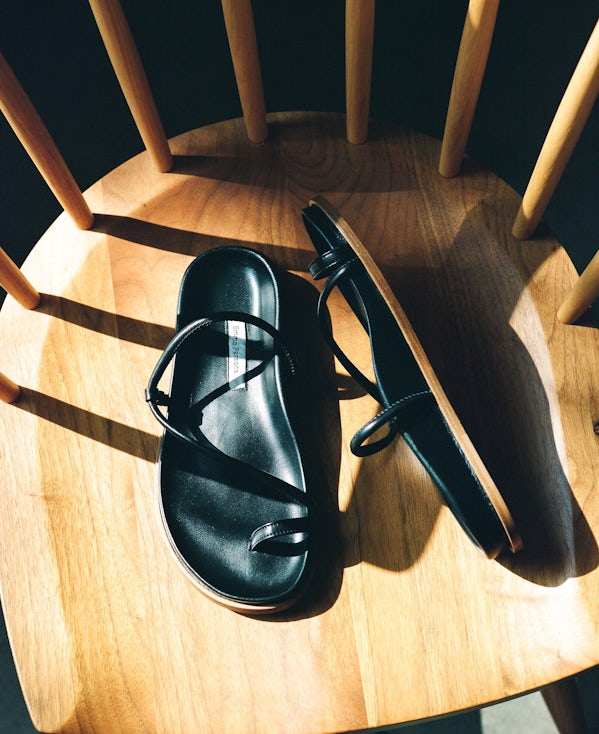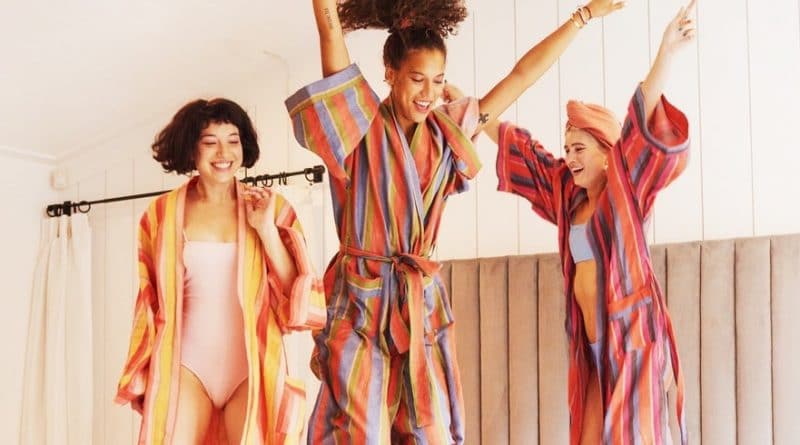Pre-Orders Are Becoming a Popular Tool for Fashion Brands. But Are They a Good Idea? | Intelligence, BoF Professional
NEW YORK, United States — Priced at less than $300 each, Telfar’s artificial leather “Bushwick Birkin” was designed to cost less than what the brand’s initial customers might earn, as founder Telfar Clemens put it, in a night of work as a DJ.
But Telfar’s rapid growth in popularity threw a wrench in its accessible strategy. Now, the T-embossed totes sell out within minutes of hitting the brand’s website. Some have even popped up on resale sites this summer for more than double the price after a fast-selling bag restock in late July left customers particularly disappointed, and became a trending Twitter topic.
The brand’s solution: a one-day unlimited pre-order option for every style and colour, to be delivered no later than January 15. That’s a long time to wait, and the offer comes with some strict rules: full payment upfront, no refunds and no cancellations.
“Real talk — we are a small team and trying to stay lean,” read a statement on Telfar’s website explaining the pre-orders, which also asks customers not to contact the brand for updates. (Brand heads Telfar Clemens and Babak Radboy were not available for an interview.)

A model wearing the small version of Telfar’s shopping bag | Source: Courtesy
Though borne out of desperation, Telfar’s pre-order sale is almost certainly being watched closely by other small brands with unexpected smash hits on their hands. The label found a way to get its customers to pre-fund its manufacturing costs, making it possible to place bigger orders. Plus, Telfar can keep its promise that anyone who wants a Bushwick Birkin can have one, as long as they don’t mind waiting up to five months.
Pre-orders, where customers pay upfront for products they will receive weeks or even months later, are nothing new in fashion. For decades, designers have hosted trunk shows where customers can order from a collection weeks after it was shown on the runway but months before it hits stores. Luxury e-commerce company Moda Operandi brought that model online. Brands at every price point routinely take to Kickstarter to crowdfund new product lines.
But in recent years, and especially in the Covid-19 era, more independent designers are using pre-orders to try to better predict demand, avoid holding excess inventory and cover production costs. In doing so, they’re flipping the script on a fashion system that, with its schedule of seasonal deliveries and uncertain payments by retailers, is increasingly out of step with the needs of small brands. These brands typically promise to deliver pre-orders in under two months, or even a few weeks, depending on their production process, to make the sale more appealing to customers.
The strategy doesn’t work for everyone – it comes with its own risks of delays, angry customers and returns. But many designers are finding the challenges are worth the rewards during this time in which the shopping mindset is impossible to predict, cash is limited and multi-brand retailers are delaying payments.
“We have seen a huge movement towards designers not even starting the construction of the garment before the order has come in,” said Stefan Siegel, the founder of independent designer platform Not Just a Label, which launched an e-commerce marketplace for designers in July. He said more than 60 percent of the initial 500 brands on board sell pre-order or made-to-order products.
Designers also said that despite the rise of see-now-buy-now shopping habits, customers can be more accepting of longer wait times, both because of the new pandemic reality and as part of a growing interest in environmentally-friendly fashion produced with less waste.
That value proposition must be carefully explained, however, and is part of perhaps the largest challenge for brands offering pre-orders: managing expectations and clear communication. Few can follow Telfar’s lead and simply tell their shoppers to “please be cool.”

A look from Kitri’s summer collection, part of which was available by pre-order | Source: Courtesy
How Brands Are Making Pre-Orders Work
Telfar is in a unique position that is especially suited for pre-orders. The brand has produced its shopping bag style for six years, allowing for plenty of time to perfect the manufacturing process. A five-month delivery window also leaves ample room for pandemic-related shipping issues, though it may test customers’ patience.
Customers also know exactly what they are going to get since they’ve already seen the bags on the subway or on Instagram. One thing Telfar won’t have to worry about is whether there will be enough demand.
“You need a threshold of traffic to be able to really make sense of the pre-order model,” said Shan Reddy, founder of financial consulting firm Redline.
Pre-orders also make sense for designers who want to take more calculated guesses on how much inventory to order. Los Angeles footwear designer Emme Parsons is currently offering her most popular shoe style — an open-toed, minimalist flat sandal called the Bari — on pre-order, with the next shipment due in late September. She said she might not otherwise have produced so many of the traditionally warm-weather shoes for sale in the fall. But with customers spending more time indoors, the demand was clearly there.
London-based online contemporary brand Kitri, co-founded by creative director Haeni Kim in 2017, typically releases a limited number of each style, and ordered even fewer than usual of its soft gingham dresses and collared floral blouses this summer due to the pandemic. The brand introduced pre-orders, with an average wait of four weeks, to retain customers who might otherwise have moved on if they missed out on sold-out styles.
“Having the money flowing into the business on a regular basis when you don’t have to upfront the cost, obviously, it helps immensely,” Kim said, adding that the brand started testing pre-orders last year. “But more than that, for us, what was really important is that we understand how to manage our inventory better because we can’t really be 100 percent right about our collection all the time.”
Pre-orders can also be an effective strategy for brands that are just getting off the ground. Bathen, an “after-bath” brand of colourful robes, hair wraps and bags handmade in Guatemala and India that launched in 2019, introduced pre-orders in April after its first batch of products sold out.
“In the past, if you run out of stock and you have nothing to sell, it’s really bad for business,” said Hannah Zisman, who co-founded and self-funded the business with two friends, who all manage the brand while also working day jobs. “But right now, it’s — ‘Okay, let’s just put this on pre-order, we’ll be fine.’ The orders will still keep coming in.”

Emme Parsons’ Bari sandal, available for pre-order due to continued popularity | Source: Courtesy
The company continues to offer pre-orders for robes that are already in the process of being manufactured via a Shopify plug-in on its site. The brand pays its manufacturers half up front and the rest when the shipment arrives.
“Because we’re self-funded, we don’t want to take on a ton of risk in terms of ordering a ton of product and having it not sell,” said Zisman.
The Cons
Pre-orders come with their own risks. Plenty of brands have crowdsourced start-up funding via pre-sale, only to run into manufacturing problems that made it impossible to meet their promise to backers. Underwhelming demand can also leave a brand unable to meet production minimums, or force them to refund customers and cancel orders.
Despite the financial benefits of pre-orders, the approach is not always a sure bet, said Abe Burmeister, co-founder of online, direct-to-consumer menswear Outlier, which is self-funded by Burmeister and business partner Tyler Clemens.
“On a short-term level, it reduces your financial risk a lot,” said Burmeister. “But in the longer term, it magnifies your risk.”
Burmeister said that Outlier has offered pre-orders on a few occasions since it launched in 2008. But dealing with customer expectations, changes in the production process and delays mean they often aren’t worth the hassle.
Marta Bahillo, the designer and founder of Spanish knitwear label Babaà, offered pre-orders for the first time in April, but said she probably won’t try that again anytime soon.
The brand promised the items, which were sold at a discount, would arrive in June, but the pandemic delayed shipping until the end of July.
Bahillo said customers didn’t complain, but she was uncomfortable not being able to stick to a delivery date.
“Things at the moment are shaky, and I don’t want my customers not to trust me,” she said.
Bahillo and her team are monitoring shoppers’ activity on her brand’s website more closely than before the pandemic and reorders where she sees demand. This allowed Babaà to capitalise on surprise sellers this summer, like knit shorts and bright red sweaters.
How to Market Pre-Orders
For brands that do want to use pre-orders to generate sales, customer service can be the trickiest part of the process. In fashion’s culture of immediacy, where shoppers are spoiled by Amazon Prime service, they need to feel like the time and effort of pre-orders will give them something special.
You have to train customers on this new idea of how to shop.
“I understood that you have to train customers on this new idea of how to shop,” said Reuben Reuel, who built his online label Demestik entirely through pre-orders, mostly on the marketplace Etsy. He said he tries to set customers’ expectations in advance by sharing details about how his clothes fit, and offering to create custom designs based on individuals’ measurements.
Kitri allows customers to cancel pre-orders, as well as return them.
“Pre-order as a concept is quite difficult for a lot of people to get around because you’re putting your money down first before you’ve even seen it in person,” Kim said.
Frequent updates on the status of orders can also help, especially if the brand uses those updates to explain why a product takes weeks to produce.
“We’ll send them a mass e-mail and be like, ‘Hey, this is the status of your product, it’s currently just got off the looms in India,’” said Bathen’s Zisman.
Bathen’s production updates align with its socially conscious mission, which was part of the selling point with customers to begin with. Brands that can cast pre-orders as a way to cut waste will also engender more patience from their customers.
“All in all, I think people understand that making a garment shouldn’t take a day,” said Kim. When customers pre-order, “they will have to think about: ‘Do I really want this? And do I want it in four weeks time? If the answer is yes, that’s probably the right reason for buying that product.”
Related Articles:
Who Needs Investors? 7 Tips for Bootstrapping Your Fashion Business

